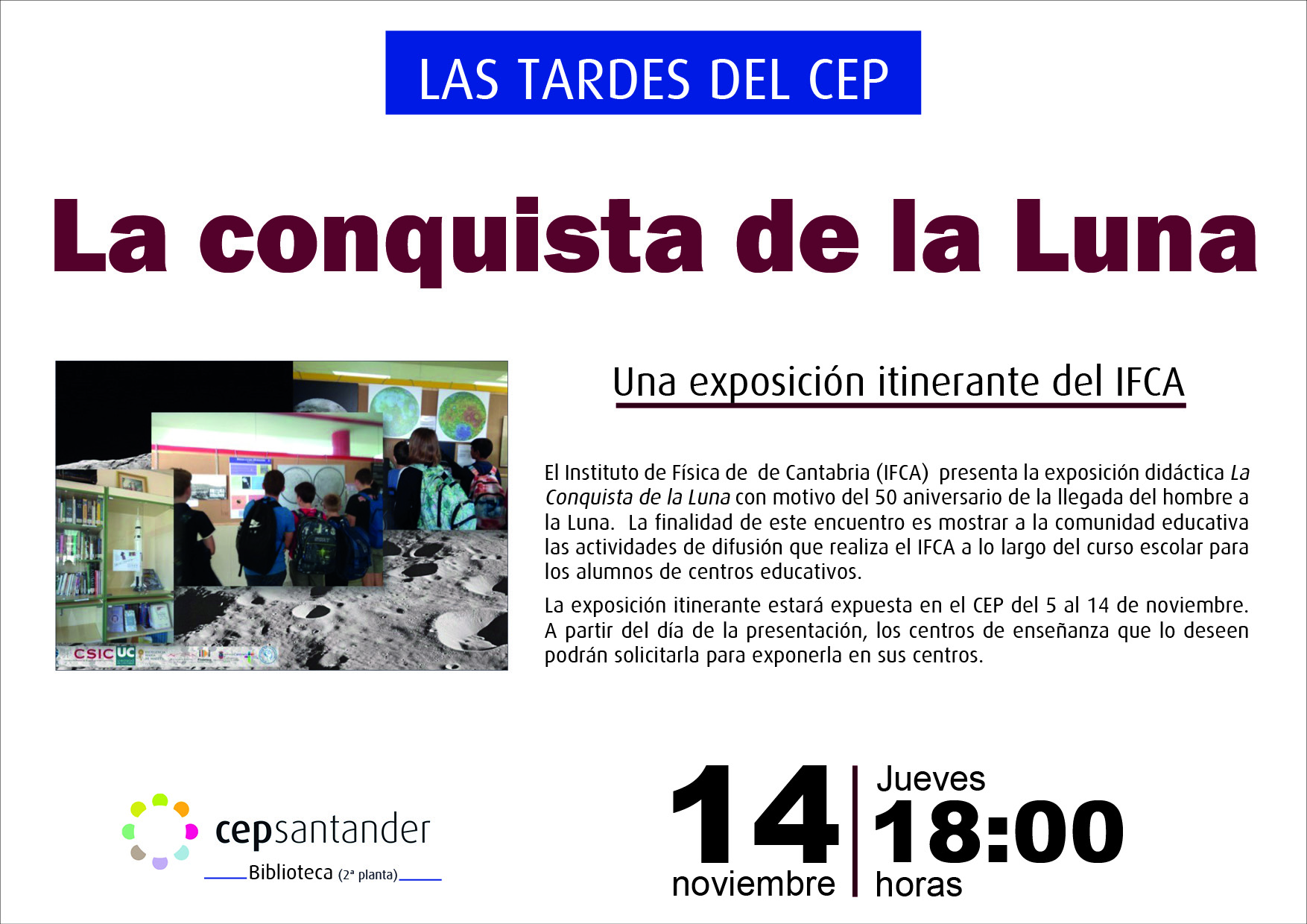
After the success obtained with the exhibition "The Conquest of the Moon" that the Institute of Physics of Cantabria (IFCA) made to commemorate the 50th anniversary of the arrival of man on the Moon, the exhibition has been given an "itinerant" format and allow to those interested schools in Cantabria can present it and bring it closer to their students.
The exhibition is organized in different sections:
• “The passion for man towards the Moon”, with panels of the first scientific works that show the craters and seas of the Moon. The visitor can compare how these representations are improving with Galileo Galilei and his improved telescopes. It also shows a comparison between two Moon images, one with the ancient names of the craters and seas of the Moon and another with those that we know today. This section has also with modern images of the Moon: the orography of both sides of the Moon, the distance from the Earth to the Moon compared with the radius of the planets and a fantastic photo of the surface of the visible face of the Moon is shown.
• “The space race”, where technological advances made between the former USSR and the USA are compared. Initially, the Russians were the ones who got the best success in space: lanching the first alive animal and the first man into space. At a specific point, the Americans overtook the USSR being the first to reach the moon. It is also shown in the exhibition how the two countries end up working together combining their technologies in favor of human progress. This section ends by recalling the role of Spain in this Space Race with the NASA headquarters in Fresnedillas, Madrid.
• “The missions to the Moon until today and future”, this section shows how other countries have wanted to demonstrate their technological power in space, sending missions to the Moon. A list of future missions is also shown. Anecdotally, in July 2019 when the exhibition was created, the mission of India Chandrayaan-2 was part of the “future missions” section, but unfortunately in September 2019 this mission failed, losing contact with its module a few meters from the moon landing. This fact shows us that the trips to the Moon are not all done and that we still have a lot of technology to learn and build.
The exhibition has been shown at the beginning of the academic year 2019/20 at the IES Cantabria, Santander, and it is currently exhibited in the library of the CEP Santander where the itinerant exhibition will be presented tomorrow November 14 at 6:00 p.m. together with the protocol to be followed will be indicated to request the loan.
